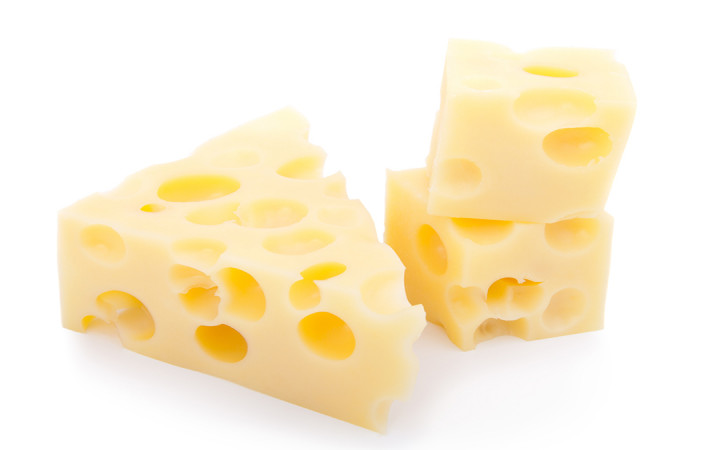Today’s Wonder of the Day was inspired by Kactie. Kactie Wonders, “Why does swiss cheese have holes in it?” Thanks for WONDERing with us, Kactie!
When you're making a delicious sandwich for yourself, which ingredients do you use? You probably start with a solid foundation of two slices of bread. From there, you probably add meat, such as turkey, ham, or chicken.
No sandwich would be complete without some tasty vegetables, though. Your sandwich will definitely gain some height when you pile on lettuce, tomatoes, onions, and pickles. After spreading on a bit of mustard and mayonnaise, there's just one more thing you need: cheese.
But what cheese do you reach for? A slice of American? A thick slab of sharp cheddar? Or a unique, hole-y piece of Swiss cheese.
What's going on here? Did the mice get to your Swiss cheese before it hit the store shelves? Perhaps Swiss cheese manufacturers add holes to make it easier to hang on strings?
Don't worry! Swiss cheese isn't full of holes because mice got to it before it hit the store shelves. You also won't find manufacturers putting holes in Swiss cheese in order to hang it on strings. Instead, the holes in Swiss cheese are purely scientific.
If you line up several popular cheeses and ask someone to identify them, one of the first likely to be identified is Swiss cheese, also known as Emmental or Emmentaler. Why? While Swiss cheese does have a distinct color and taste, it has another unique quality that it's known for more than anything else: holes.
Why Swiss cheese has holes was a mystery for many years. Then, in 1912, a U.S. Department of Agriculture chemist named William Mansfield Clark published a manuscript in which he set forth his theory behind the holes in Swiss cheese.
Like all cheeses, Swiss cheese is made using particular bacteria cultures. According to Clark, the particular methods and cultures used to make Swiss cheese encourage the formation one specific type of bacteria called Propionibacterium freudenreichii. During the aging process, this bacterium gives off carbon dioxide, which forms gas bubbles inside the cheese. Eventually these gas bubbles leave holes in the cheese, which cheesemakers call "eyes."
Clark's theory remained unchanged for decades. Then, in the 1990s, scientists began to suspect that Clark's theory didn't tell the hole — oops, we mean whole — story. What cheesemakers first noticed in Europe was that their cheeses were going blind. In other words, they began to contain fewer and fewer holes or "eyes."
Since the cheese making process had not changed, something else had to account for the missing holes in their Swiss cheeses. Recently, Swiss researchers from an agricultural research center called the Agroscope Institute for Food Sciences, announced that they had the answer: hay.
For years, scientists had believed that the carbon dioxide gas bubbles in Swiss cheese must form around some sort of particulate matter, similar to the way in which raindrops form around particles of dust in the air. Scientists call this process heterogeneous nucleation. Swiss researchers now believe that, in Europe at least, the particles in question were microscopic bits of hay that could be found in milk buckets.
So what happened in the early 1990s to change things? European dairies were forced to modernize to comply with new European Union standards. Traditional buckets and barns were replaced with modern processing centers with sealed milking machines. As the presence of hay particles in milk decreased greatly, so did the presence of holes in Swiss cheese!
Swiss researchers confirmed their findings with scientific studies. The more hay particles they added to pure, filtered milk, the more holes would appear in the Swiss cheese they made. Cheesemakers are now able to use this information to add particles to their milk to produce Swiss cheese with exactly the number and type of holes they want.
Of course, not all the mysteries of Swiss cheese have been solved. For example, cheesemakers in the United States and other parts of the world have not observed their cheeses going "blind" like those in Europe. Scientists believe there must be other unknown particles that account for the "eyes" in American Swiss cheese.





